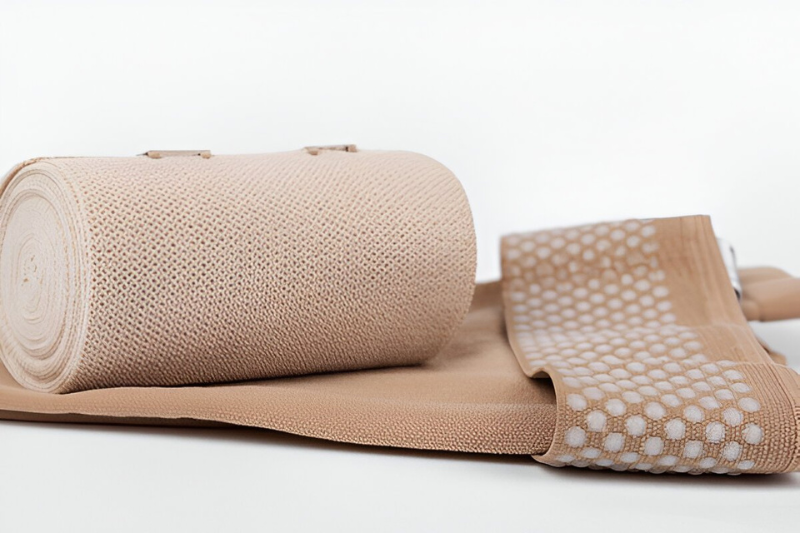Compression garments support healing after a tummy tuck by reducing swelling, improving contour, and promoting skin adherence. Proper fit and timing are essential for optimal results.
What is a Tummy Tuck?
A tummy tuck is a popular body contouring surgery. For many, the procedure is an exciting step toward achieving a flatter, more contoured midsection. But a smooth recovery is essential to achieving the best results. Compression garments are a key part of the tummy tuck recovery process, helping to reduce swelling, support healing, and shape your new contour.
What Are Compression Garments?
Clothing made specifically to fit snugly around the skin and apply pressure to particular body parts, known as a compression garment. In sports and medicine, compression garments enhance performance, promote healing, and ward off injuries. Usually, a combination of spandex, nylon, or other elastic materials makes these clothes generate the required pressure.
The elasticized clothing pieces are designed to provide consistent support to the surgical area. After a tummy tuck procedure, the body undergoes significant changes, including swelling, fluid retention, and healing of the incisions. Therefore, wearing compression garments helps address these issues while ensuring that recovery progresses smoothly.
Compression Garments Essentials
1. Pain Reduction
Many patients find that compression garments provide comfort and reduce discomfort during movement. Surveys show that patients wearing these garments report a 30% reduction in pain levels compared to those who do not.
According to the American Society of Plastic Surgeons (ASPS), these garments help reduce postoperative discomfort by minimizing swelling and providing support to the affected area.
2. Improved Healing Time
Patients who consistently wear compression garments during the recovery phase often report a faster healing process. Research suggests that proper compression can shorten recovery time by approximately 20-30%.
A study published in Sports Medicine – Open found that wearing compression garments after strenuous exercise improved recovery of muscle function, suggesting potential benefits for postoperative healing as well.
3. Improving Blood Circulation
Consistent compression promotes healthy blood flow, speeding up the body’s natural healing process. Subsequently, reduces muscle soreness and stiffness. It also lowers the risk of injuries by enhancing blood circulation and lymphatic drainage. Eventually helps the muscles receive oxygen and nutrients while eliminating waste.
4. Contour Support
These garments aid in shaping your new abdominal contour, ensuring the skin adheres properly to the underlying tissues.
5. Swelling Management
Tummy tucks often lead to swelling in the abdominal area. Compression garments help reduce this swelling by applying gentle pressure, preventing excess fluid buildup. Studies indicate that wearing compression garments can reduce postoperative swelling by up to 50%.
6. Prevention of Seromas
The use of compression garments can significantly lower the risk of seromas (fluid accumulation) after surgery. Statistics indicate that patients who wear compression garments have a 40% lower incidence of seromas.
7. Enhanced Skin Tightening
Compression helps in the skin retraction process, which can lead to better aesthetic outcomes. Studies have shown that patients wearing compression garments are more likely to achieve optimal skin-tightening results.
8. Patient Compliance
Research shows that patients who are educated about the benefits of compression garments are 60% more likely to adhere to wearing them as prescribed. As a result, this leads to better overall recovery outcomes.
9. Psychological Benefits
Many patients report feeling more secure and supported when wearing compression garments, which can positively impact their mental well-being during recovery. By wearing these garments as recommended, you set the foundation for achieving the desired smooth, sculpted results.
Different Types of Compression Garments
There are different types of compression garments available, including binders, girdles, and bodysuits.
1. Binders
Binders are typically recommended for the initial stage of recovery as they provide firm support and help reduce swelling.
2. Girdles
Girdles are a popular choice for the later stages of recovery as they offer more flexibility and comfort while still providing compression.
3. Bodysuits
Bodysuits are another option that covers the entire torso and can provide support to multiple areas at once.

Tummy Tuck Recovery – Compression Garments Size and Measurements
To begin with, getting the right size based on precise measurements is essential to getting the required amount of compression without sacrificing comfort or mobility. Selecting premium materials with moisture-wicking capabilities can also improve general comfort over extended use.
Unquestionably, proper care is required to maintain the elasticity and compression qualities of compression garments over time. Following the manufacturer’s washing and storage recommendations can increase the lifespan of these clothes while preserving their performance advantages.
Tummy Tuck Recovery – Compression Garments FAQs
1. What are compression garments?
Compression garments are tight-fitting clothing items that apply pressure to the body to help improve circulation and reduce swelling.
2. How do compression garments work?
Compression garments work by applying pressure to the body, which helps reduce fluid build-up and improve blood flow.
3. Who can benefit from wearing compression garments?
Anyone who experiences swelling, poor circulation, or fatigue in their limbs may benefit from wearing compression garments.
4. Are compression garments only worn during exercise?
Compression garments are commonly worn during exercise to improve performance and recovery. They can also be worn throughout the day for medical purposes.
5. Can compression garments help with muscle soreness?
Indeed, compression garments can help reduce muscle soreness and speed up the recovery process by improving blood flow and reducing swelling.
6. How tight should compression garments be?
Compression garments should be snug but not too tight. They should provide enough pressure to feel supportive without restricting movement or causing discomfort.
7. Can compression garments help with varicose veins?
Certainly, compression garments can help improve circulation and reduce the symptoms of varicose veins by applying pressure to the affected area.
8. Are there different levels of compression in garments?
Of Course, compression garments come in different levels of compression, ranging from mild to strong. The level of compression needed will depend on the individual’s specific needs.
9. How do you wash compression garments?
Compression garments should be hand-washed in cold water and air-dried to maintain their shape and effectiveness.
10. Can compression garments help with lymphedema?
Affirmatively, compression garments can help manage the symptoms of lymphedema by reducing swelling and improving circulation in the affected limb.
11. Do compression garments come in different styles and colors?
Yes, compression garments come in a variety of styles, colors, and sizes to suit individual preferences and needs.
12. Can compression garments be worn under clothing?
Positive, compression garments are designed to be worn under clothing and can be discreetly worn throughout the day.
13. Are compression garments considered medical devices?
Some compression garments are considered medical devices and may require a prescription from a healthcare provider. While others are available over the counter.
14. How long should you wear compression garments?
The length of time to wear compression garments will vary depending on the individual’s needs and the purpose for wearing them. Consult with a healthcare provider for specific recommendations.
15. Can compression garments be worn during pregnancy?
Absolutely, compression garments can be worn during pregnancy to help reduce swelling in the legs and improve circulation. Consult with a healthcare provider before wearing compression garments during pregnancy. Additionally, discover what to expect during the tummy tuck recovery process.
How to Choose the Right Fabric Material for Compression Garments?
Choosing compression clothing requires careful consideration of fit and fabric quality. These clothes largely depend on their capacity to consistently press on the designated areas without causing pain or impeding movement. Low-quality or poorly fitting compression clothing may not provide the intended results and may cause chafing or discomfort when worn.
Because of their durability and elasticity, premium materials like nylon blends, spandex, and elastane are frequently used in compression clothing. These materials retain their compression and shape over time, enabling a snug but comfortable fit. Also, the fabric’s ability to wick away moisture can keep the skin cool and dry. While exercising, improving comfort and performance all around.
How to Use Compression Garments Properly?
Dr. Stan Castor will provide detailed instructions on how and when to use your compression garments to maximize your tummy tuck recovery. Typically, he advises patients to wear these garments continuously. Especially for the first few weeks after surgery, except during bathing or garment washing. As your healing progresses, Dr. Castor will guide you on gradually reducing the duration of use.
The garment should feel snug enough to offer support but not so tight that it causes discomfort or impedes circulation. If you have any concerns about the fit or feel of your garment, my team at Artisan Aesthetics Plastic Surgery in Tampa, Florida, is always available to assist.
Schedule a Tummy Tuck Procedure Consultation in Tampa, Florida
Interested in a tummy tuck but have questions about the recovery process? Let us guide you toward the body you’ve always wanted with compassionate care and exceptional results. Contact us today at 813-971-2000 to schedule your consultation and start your journey.

